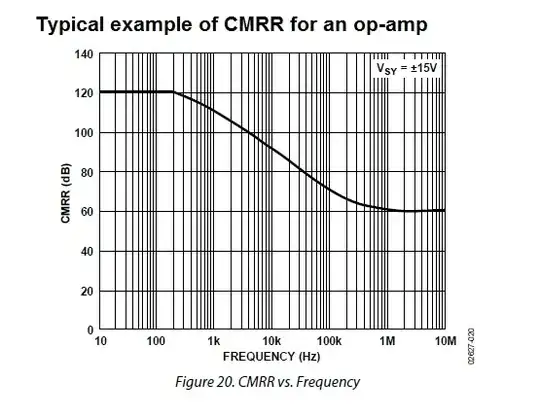It's a weakly defined spec. Even for the modest op-amp I'd expect to see a graph such as this: -

This happens to be for an OP4177 op-amp and it tells you what you can expect all the way up to 10MHz.
The AE101 spec in the question only goes as high as 300 Hz and this is not good-enough in my opinion. You can expect, at frequencies beyond 1kHz, for this to get worse so I'd contact the supplier and get them to confirm what really happens.
Also, I wouldn't be very happy with the quoted noise voltages on page 47 - these are telling me that the bridge excitation supply voltage is the biggest contributor to noise and this shouldn't be so - there is little information about the noise and how it is shaped across the bandwidth of the device.
